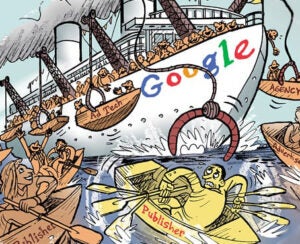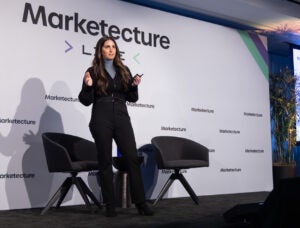 “The Sell Sider” is a column written by the sell side of the digital media community.
“The Sell Sider” is a column written by the sell side of the digital media community.
Today’s column is written by Ryan Pauley, general manager at Concert and vice president of revenue operations at Vox Media.
Certain corners of the advertising world discuss Feb. 15 with the kind of panic you might associate with the latest Bitcoin crash. The source of their anxiety? Starting on that date, Google’s Chrome browser will begin blocking noncompliant (read: annoying) ads on sites that traffic substandard formats.
The doomsayers expect the sky to fall – and indeed, if you’re a publisher whose site is clogged with annoying ad formats, a marketer who works with creative partners to produce intrusive ads or an ad network that makes money from running ads that cover up publisher content, you are in a bit of self-inflicted trouble.
But for the rest of the industry, this change represents an important, albeit small – Google estimates about 1% of publishers are not compliant with the new standards it’s enforcing – first step in ridding the internet of a menagerie of dreaded ad experiences.
The entire digital advertising landscape stands to benefit from the shift to more high-fidelity ad experiences: Ideally, readers will see ugly and irksome ads with far less frequency, marketers will be forced to invest in quality ad solutions and publishers that adopt more attractive and effective ad units will thrive.
To grasp the issue, we need to understand the kind of ads that Chrome is attempting to banish. The Coalition for Better Ads tested 55 desktop and 49 mobile web ad experiences and identified four desktop and eight mobile ad experiences that fall below some “threshold of consumer acceptability.”
These include formats that have long distinguished themselves for their enraging qualities: blaring autoplay ads whose mute buttons are impossible to find, blinking and flashing animations and pop-ups or interstitials whose sole intention is to prevent readers from accessing editorial content.
If your site serves up these ads on more than 7.5% of your pages, they’ll be blocked until you shape up. Publishers that clear that (incredibly low) bar will not see any change.
One might wonder why we are even still seeing these things online if they’re clearly not good for the advertiser or the audience. We’re collectively stuck believing that quality and scale are mutually exclusive when, in fact, they can certainly coexist if you put the effort in.
Marketers, for example, should align themselves with partners who value quality ad solutions. They should invest in creative work that delivers a great user experience while avoiding publishers and creative partners who rely on the kinds of ads that are being squashed by Google. This is a call for marketers to treat digital ads with the same care and respect as ads that run in print or on television.
Despite Google’s efforts, many of the worst industry offenders will come out unscathed, particularly the non-publisher-led ad networks driven by financial incentives, instead of audience incentives. These networks, notorious for producing some of the worst ad experiences, will only be blocked if they have access to a large enough share of a publisher’s inventory to activate the blocker – meaning that they’ll likely skate by despite Chrome’s change.
Working in digital publishing, I can guarantee you that the most premium publishers are already well on their way to eliminating any monetization partner who delivers substandard experiences. These are the ads that are known to drive audiences to turn on their own ad blockers. So, marketers and publishers alike, continue working with partners producing these types of formats at your own peril. There are quality alternatives that can actually produce more revenue.
Feb.15 brings us one small step farther in the right direction. It might not drive noticeable change, but the motivation is right. Let’s all use this as a nudge to make our own much-needed changes.
Marketers: Remember your audience, since they’re the most important asset for your brand and it’s clearer than ever that they don’t enjoy being annoyed.
Publishers: Let’s work together to continue to build solutions that can work much harder for our partners, without making any sacrifices.
To those who continue to rely on inferior experiences and shortcuts for scale: You might not be immediately scorned, but this is a warning call that soon you will be left behind.
Follow Concert (@Concert), Vox Media (@voxmediainc) and AdExchanger (@adexchanger) on Twitter.












